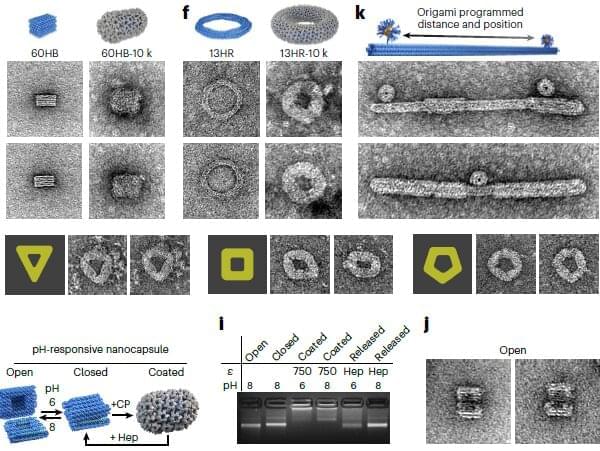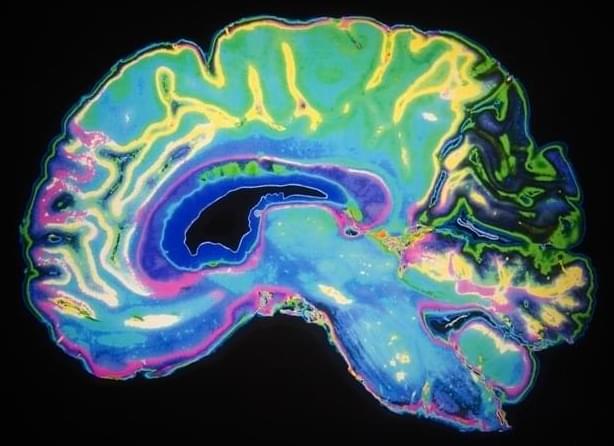Their system combines lightweight, barely there tech with ANC that can scrub out even the bassiest frequencies.
Get the latest international news and world events from around the world.
Robert Laughlin — Can Emergence Explain Reality?
Explore Closer To Truth’s library of 5,000 videos for free: https://closertotruth.com/
Is emergence a mystery? Does ordinary stuff have mysterious properties? Take anything; find and separate all its parts and catalogue their properties. Then recombine those parts. What would you get? Nothing at all like what you expect from the sum of all those properties. It’s called ’emergence’ and it describes how wondrously our world works on every level.
Support the show with Closer To Truth merchandise: https://bit.ly/3P2ogje.
Watch more interviews on complexity and emergence: https://shorturl.at/gwPQ0
Robert Betts Laughlin is a theoretical physicist and the Anne T. and Robert M. Bass Professor of Physics and Applied Physics at Stanford University.
Register for free at CTT.com for subscriber-only exclusives: https://bit.ly/3He94Ns.
Cover-Up Of Promising Cancer Treatment | Cancer Research | Documentary
The story of a young science-writer at Memorial Sloan-Kettering Cancer Center, who risked everything by blowing the whistle on a massive cover-up involving a promising cancer therapy.
Cover-Up Of Promising Cancer Treatment (2014)
Director: Eric Merola.
Writers: Eric Merola.
Stars: Robert Good, Ben Moss, Martha Moss.
Genre: Documentary, Biography, Drama.
Country: United States.
Language: English.
Also Known As: Second Opinion — The Lie of America’s War on Cancer.
Release Date: March 1, 2014 (United States)
Reviews:
“This movie hits home since my dad died of cancer when I was 13 and it upsets me tremendously to think that our overall health care system has been corrupted due to the profit system. The Hippocratic oath seems to be more focused on maintaining the status quo of profit versus curing medical problems.
The Movie: An insider’s account from the 70’s at a well known NYC cancer research hospital exposing the truth (using the hospital’s own records) behind how the profit system has corrupted the search for finding a “cure” for cancer. A promising treatment was swept under the rug and the scientist who found it (co-founder of chemotherapy) was forced to lie about his treatment. The treatment was not the “cure”, but it worked remarkably well and very cheap. The problem was it was “very cheap”. Even though the movie is centered around 1 character and it’s almost entirely a narrative, the topic and the evidence is so damning, it’s exciting. It’s a knock-out punch guilty as charged for the hospital. Definitely recommended to all.“
- written by “ben-98–143433″ on IMDb.com.
MORE DOCS!
► Gold: https://bit.ly/2IRZ0OA
► World Economy: https://bit.ly/36QlhEM
► All Playlists: https://bit.ly/3lOiCll.
#cancer #cancertreatment #documentary.
US scientists discover chemical to reverse aging
In a groundbreaking study, researchers have unlocked a new frontier in the fight against aging and age-related diseases. The study, conducted by a team of scientists at Harvard Medical School, has published the first chemical approach to reprogram cells to a younger state. Previously, this was only achievable using a powerful gene therapy.
The team’s findings build upon the discovery that the expression of specific genes, called Yamanaka factors, could convert adult cells into induced pluripotent stem cells (iPSCs). This Nobel Prize-winning discovery raised the question of whether it might be possible to reverse cellular aging without causing cells to become too young and turn cancerous.
Reference:

SRF experiment.com campaign sets sights on mitochondrial DNA
Following the success of its first experiment.com campaign, which was raising money to identify therapeutics that reduce senescent cell accumulation and extend healthspan, the SENS Research Foundation has announced the next funding project.
Last month, we covered the fundraiser for Dr Abdelhadi Rebbaa’s research into the discovery and testing of novel senolytic molecules, which would back into his discovery of potential anti-senescence therapeutics. SRF has confirmed that this campaign is now fully funded.
Now SENS Research Foundation has launched its second experiment.com campaign for Dr Amutha Boominathan’s project Finding a cure for mitochondrial DNA diseases through COX2 variations to restore cell function, hoping to raise $8,000 over 45 days, with the campaign coming to an end next month, on 30th August. Dr Boominathan is head of the MitoSENS program at SENS Research Foundation.

Researchers uncover potential biomarkers of positive response to immunotherapy
Scientists at the UCLA Jonsson Comprehensive Cancer Center have identified potential new biomarkers that could indicate how someone diagnosed with metastatic melanoma will respond to immunotherapy treatment.
The researchers found when T cells are activated, they release a protein called CXCL13, which helps attract more B cells and T cells to the tumor site. The B cells then show the T cells specific parts of the tumor, which leads to increased activation of the T cells and their ability to fight the cancer. This cooperation between T cells and B cells was associated with improved survival in patients diagnosed with metastatic melanoma who were treated with immunotherapy, but not for those who received targeted therapy (e.g., MEK inhibitors).
These findings could help guide new strategies to improve the effectiveness of melanoma cancer treatments. The research is published in the journal Frontiers in Immunology.

Regulator says found no animal welfare breaches at Musk firm beyond 2019 incident
USDA found Neuralink to be in compliance with animal safety and welfare standards after an isolated incident of using an unapproved sealant to close a monkey’s skull in a surgery triggered an investigation. FDA granted a request to begin testing it’s implant device in humans.
July 19 (Reuters) — The head of the U.S. agency responsible for animal welfare has told lawmakers that it did not find any violations of animal research rules at Elon Musk’s Neuralink beyond a 2019 incident the brain implant company had already reported.
Officials with the Department of Agriculture (USDA) conducted a “focused” inspection in response to a complaint about the company’s handling of animal experiments, but identified no compliance breaches, the agency’s secretary Thomas Vilsack wrote to Congressman Earl Blumenauer in a July 14 letter reviewed by Reuters.
The inspection included visits at Neuralink’s two facilities in January 2023, Vilsack wrote, adding that there would be more inspections.

Researchers craft ‘origami DNA’ to control virus assembly
Griffith University researchers have played a key role in using DNA “origami” templates to control the way viruses are assembled.
The global team behind the research, titled “DNA-origami-directed virus capsid polymorphism,” published in Nature Nanotechnology, developed a way to direct the assembly of virus capsids—the protein shell of viruses—at physiological conditions in a precise and programmable manner.
Dr. Frank Sainsbury and Dr. Donna McNeale from the Griffith Institute for Drug Discovery were part of the research team and said forcing viruses to assemble onto DNA folded into different shapes “like origami” was a question that this project answered.

Study provides clues to the neural basis of consciousness
More than a quarter of all stroke victims develop a bizarre disorder -; they lose conscious awareness of half of all that their eyes perceive.
After a stroke in the brain’s right half, for example, a person might eat only what’s on the right side of the plate because they’re unaware of the other half. The person may see only the right half of a photo and ignore a person on their left side.
Surprisingly, though, such stroke victims can emotionally react to the entire photo or scene. Their brains seem to be taking it all in, but these people are consciously aware of only half the world.

Psychological study suggests arithmetic is biologically-based and a natural consequence of our perception
Everyone knows that 2 + 2 = 4, but why do we have arithmetic in the first place, and why is it true? Researchers at the University of Canterbury have recently answered these questions by “reverse engineering” arithmetic from a psychological perspective. To do this, they considered all possible ways that quantities could be combined, and proved (for the first time in mathematical terms) that addition and multiplication are the simplest.
Their proof is based on four assumptions —principles of perceptual organization—that shape how we and other animals experience the world. These assumptions eliminate all possibilities except arithmetic, like how a sculptor’s work reveals a statue hidden in a block of stone.
Monotonicity is the idea of “things changing in the same direction,” and helps us keep track of our place in the world, so that when we approach an object it looms larger but smaller when we move away. Convexity is grounded in intuitions of betweenness. For example, the four corners of a football pitch define the playing field even without boundary lines connecting them. Continuity describes the smoothness with which objects seem to move in space and time. Isomorphism is the idea of sameness or analogy. It’s what allows us to recognize that a cat is more similar to a dog than it is to a rock.